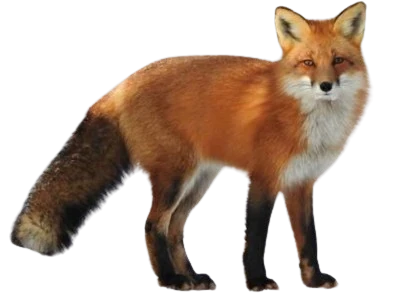
The Red Fox (Vulpes vulpes) is the largest and most common fox species. This omnivorous canid is known for its cunning and remarkable adaptability, thriving in both forests and urban areas.
The Red Fox is recognizable by its bright orange coat, black legs, and white belly. It measures about 35 to 50 cm at the shoulder and weighs between 3 and 10 kg depending on its habitat. Its long, bushy tail, often called a "brush tail," helps it maintain balance while running or jumping.
The Red Fox belongs to the Canidae family.
This fox is one of the most widespread carnivores globally, with populations in Europe, North America, Asia, and even Australia.
The Red Fox is highly adaptable and can be found in a wide range of habitats: forests, grasslands, mountains, agricultural areas, and even cities. Its ability to exploit diverse environments makes it a remarkable species.
This canid is primarily solitary but may form family groups during the breeding season. Active mainly at dawn and dusk, the Red Fox is an opportunistic hunter, using its acute hearing to locate prey under snow or vegetation.
An omnivore, the Red Fox feeds on a variety of prey: rodents, birds, insects, fruits, and berries. In urban areas, it may even scavenge in garbage. This diverse diet highlights its ability to thrive in changing environments.
Although the Red Fox is not endangered, it faces threats such as hunting, diseases like rabies, and collisions with vehicles. Its reputation as a nuisance can also lead to persecution.
The Red Fox belongs to the genus Vulpes, which also includes the Fennec Fox (Vulpes zerda), the Corsac Fox (Vulpes corsac), and the Cape Fox (Vulpes chama). These species share common characteristics, notably their small size and adaptation to various environments.
To observe the Red Fox in its natural or urban habitat, follow these tips:
By following these recommendations, you can admire this fascinating animal while minimizing disturbances.